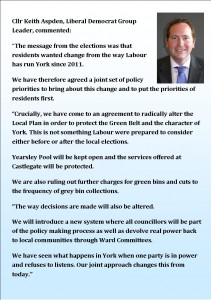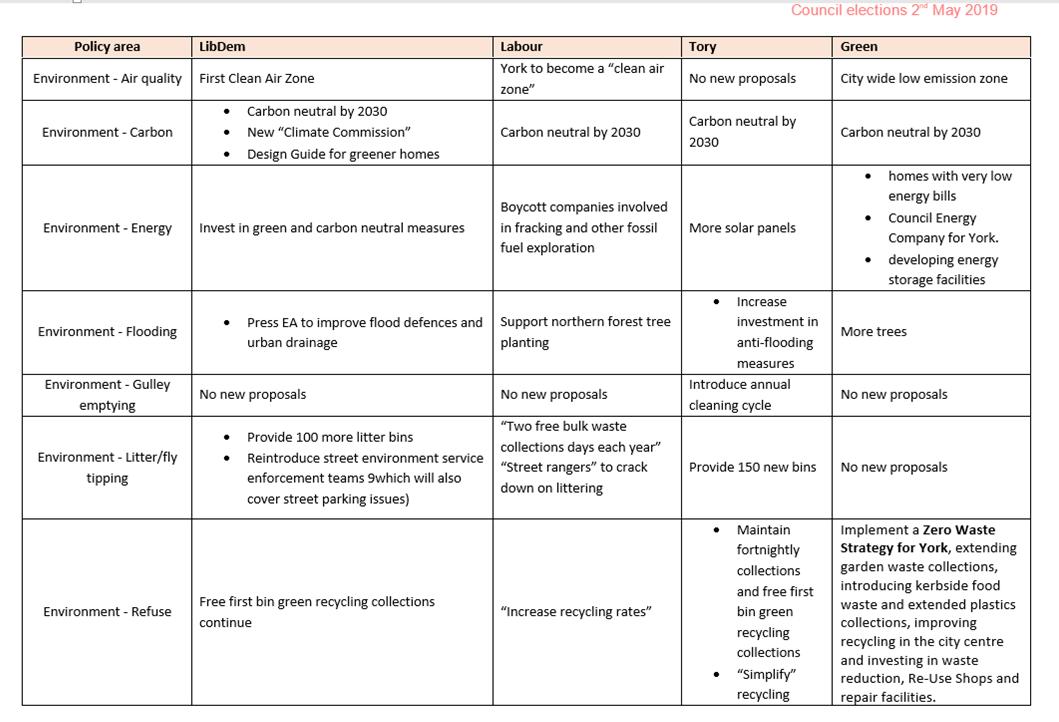No reduction in grey bin emptying frequencies. Plans for £35 green bin tax also axed.
Liberal Democrat Councillors have reached a tentative agreement to form a joint administration with the Conservative Group to run City of York Council.
Liberal Democrat Leader Cllr Keith Aspden will become Deputy Leader of the Council, with Cllr Chris Steward as Council Leader. The new Executive will be made up of 4 Conservatives and 4 Lib Dems, with appointments due to be agreed at Thursday’s Annual Council meeting.
The Group has published an initial set of joint policy priorities which include redrawing York’s Local Plan, putting greater investment in frontline services and ending so-called “vanity projects”.
They have also published joint governance proposals which introduce new cross-party working arrangements and include a commitment to improve openness and transparency at the Council.

Keith Aspden statement click to enlarge
The major interest for residents is what this will mean for the way the Council is run and what policies are pursued?
The commitment to openness is welcome although, for coalitions to work, usually some private wheeler dealing is necessary.
The Council will need to say, early on, how it will in practical terms improve “openness”.
One step would be to update performance stats each month giving access to raw data on line. Any administration will worry about perceptions of adverse trends but most residents – against the background of reducing resource levels – will accept that there will be some ups and some downs.
One major issue to be addressed is the Local Plan. The two parties have so far failed to agree on an optimum housing new build figure.
The LibDem preferred figure of 575 pa is more than Labour achieved during any of the 4 years that it was in control of the Council.
It is a figure which the Tories may struggle to support – given their dependency on business backers – although it would guarantee the integrity of the Green Belt in York.
Residents will be scanning the draft policy agreement, when it is published, for proposals on other key issues.
These include:
- Dealing with the detritus of the past (Lendal Bridge/Coppergate, Grand Departy overspends, 20 mph speed limits etc)
- Housing estate regeneration proposals
- Investment in the Acomb Front Street and other sub-urban shopping areas
- Community Centre support
- Relations with the West Yorkshire “Combined Authority”
The new Council is right to plan an emergency budget which hopefully will freeze any additional expenditure plans and then take time to re-adjust priorities.
The long term aim must be to reduce the amount that the Labour Council was paying in interest payments to fund their “vanity projects”
In the meantime, no doubt discussions on the details of policy will continue and become clearer to residents at the Council meeting scheduled to take place on 16th July.



